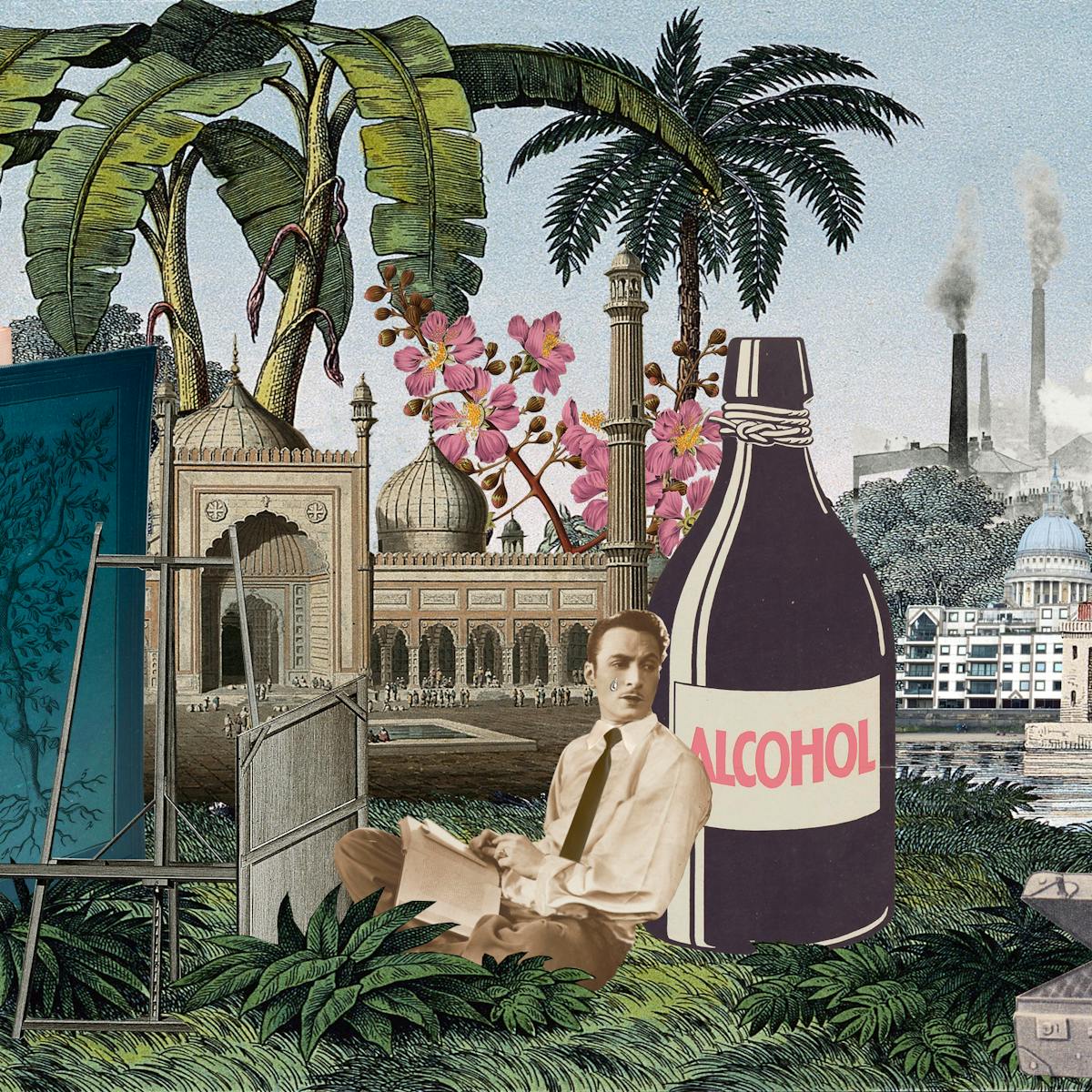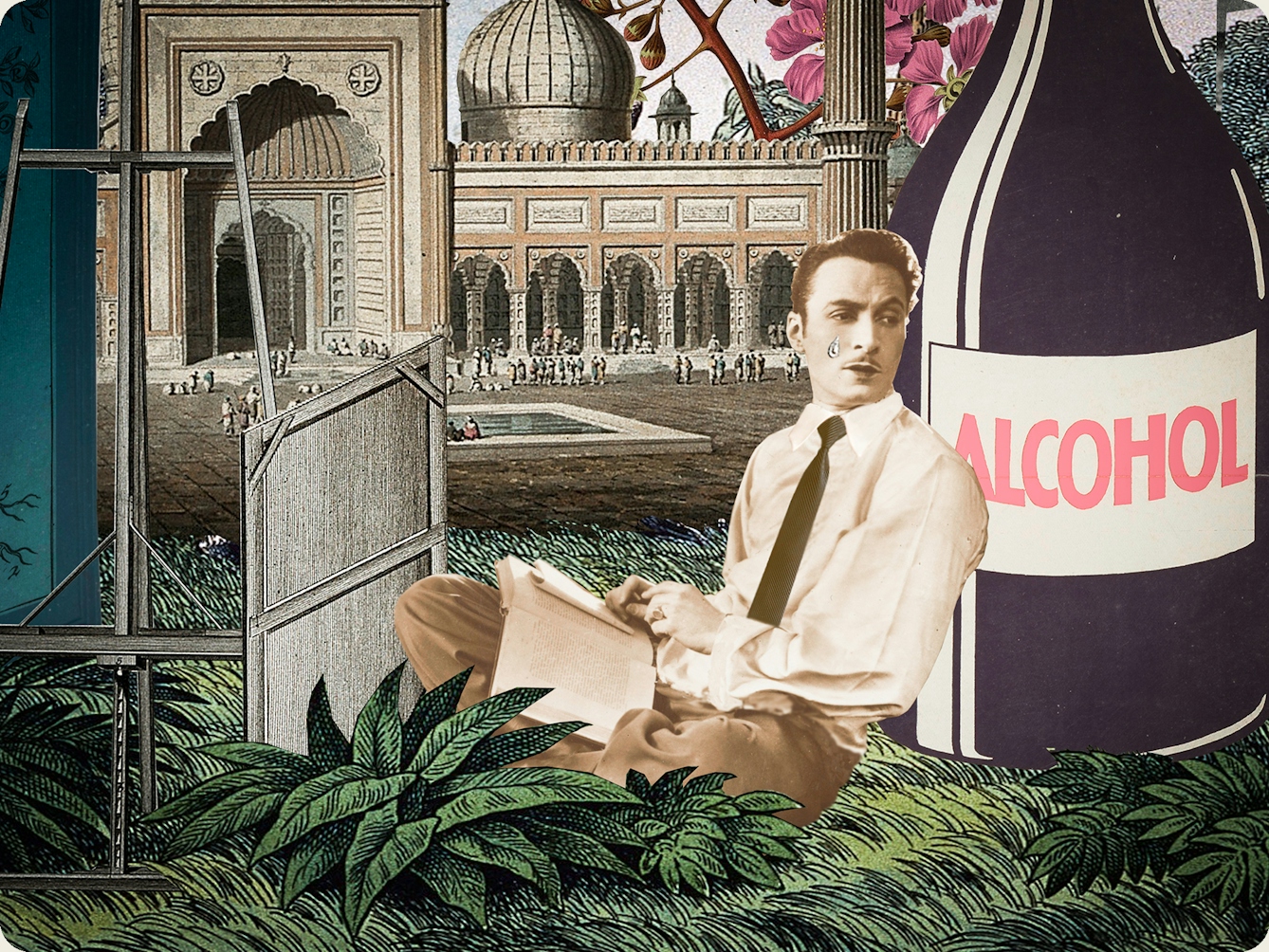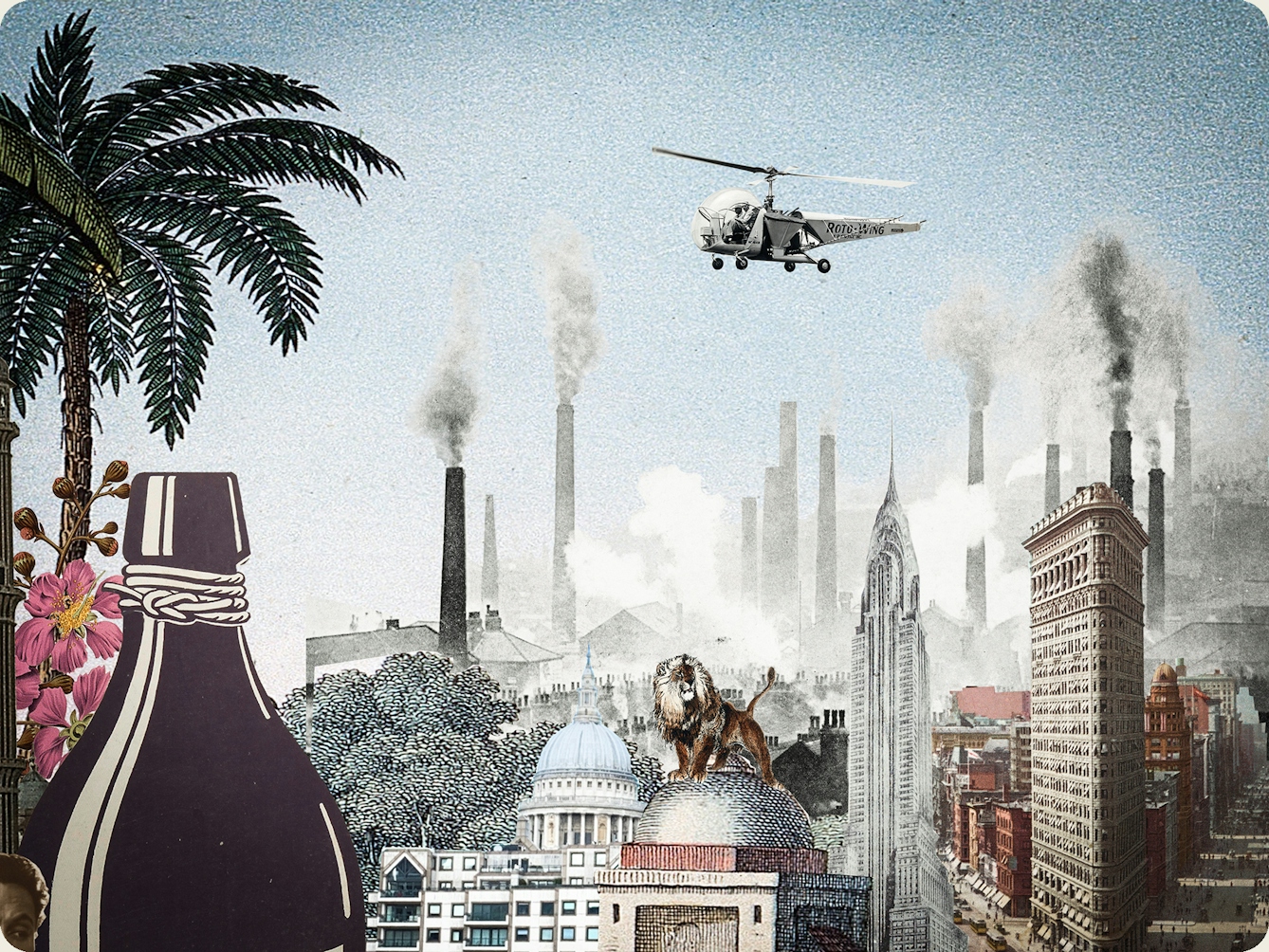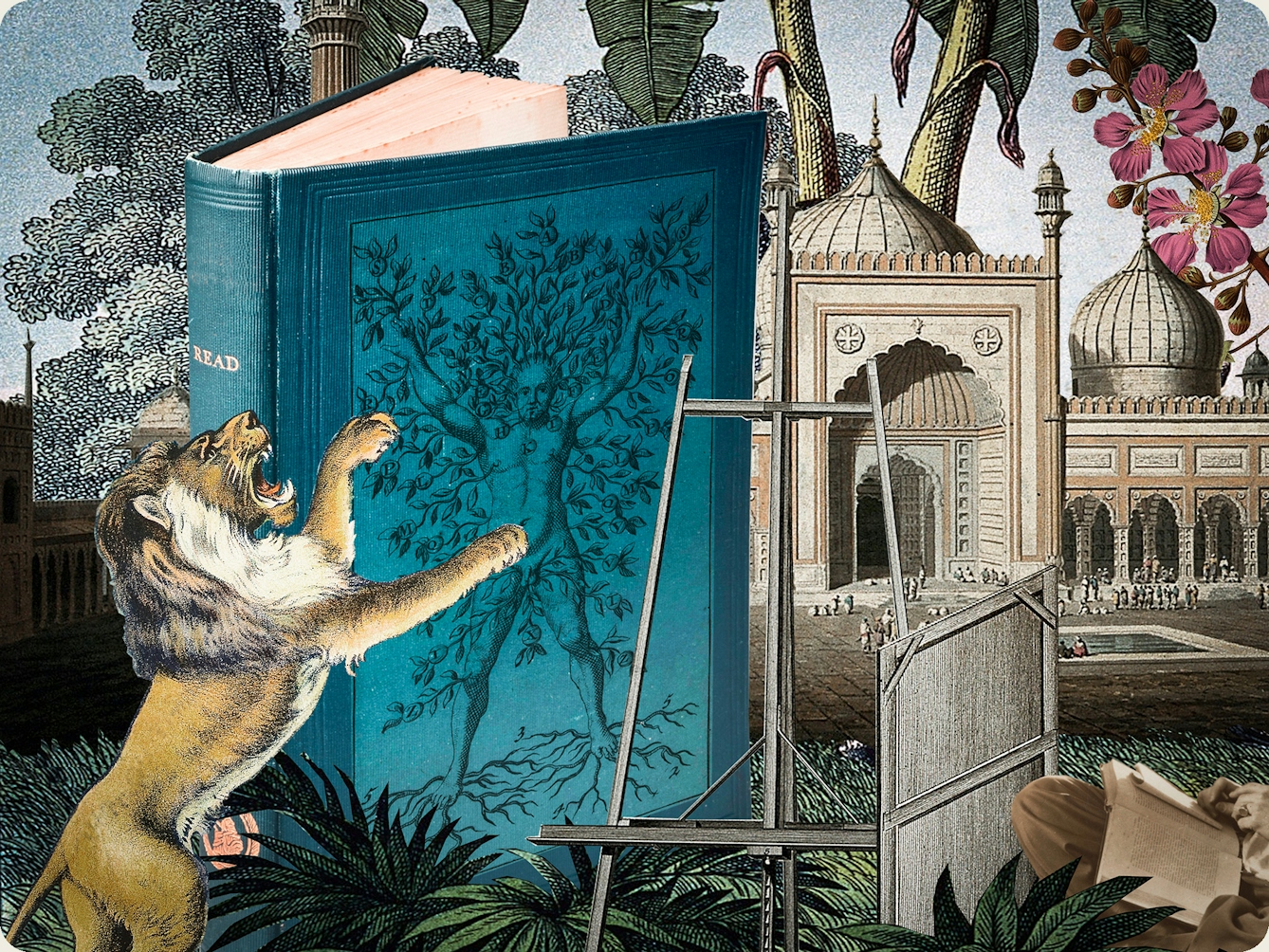Three artists far from their birthplaces – Chile, northern India and the US – capture the different facets of homesickness in their work. They express both the loss and the connection in this complex experience, articulating their longing and the perpetual hunt for a lost place.
How homesickness inspires art
Words by Gail Tolleyartwork by Maria Rivansaverage reading time 6 minutes
- Serial

Imagine you are in a hotel bar, many miles from home. You’re far away from family, friends and anything familiar, and you’ve got an undeniable case of the homesick blues. As you nurse a whisky, looking (and feeling) like you’re in a Edward Hopper painting, the barman asks why you’re so glum. Mr Barman, it turns out, has never experienced homesickness. And so you’re faced with the challenge of trying to describe it to him.
I’ve been running this scenario through my head for a while now, and something’s occurred to me. While I could send my new friend off to a library to read journal articles and textbooks about homesickness, this would only give half the picture. In my own life, the way I’ve come to understand others’ experiences is through their stories.
Want to know what heartbreak feels like? Spend a night watching the TV dramatisation of ‘Normal People’. Want to get a sense of teenage angst? Then listen to Nirvana’s ‘Nevermind’ on repeat.
For centuries, artists have attempted to capture what it is to be human. Stories, images, artworks and music have portrayed our experiences – both ordinary and extraordinary – in all their detail and nuance. So to understand homesickness right now, I needed to examine the works of modern-day artists grappling with the topic. Through their lens perhaps the concept would come into greater focus.
If I wanted to help someone understand homesickness, the first thing I would try to explain is how it feels. How it can descend suddenly and unexpectedly. And to give a sense of this I would use an essay by Nigerian-American writer and photographer Teju Cole. Much of Cole’s work is concerned with our connection to place. But it’s in ‘Home, Strange Home’, published in the New Yorker, that he touches specifically on homesickness.

“As you nurse a whisky, looking like you’re in a Edward Hopper painting, the barman asks why you’re so glum. Mr Barman, it turns out, has never experienced homesickness.”
An intense feeling of loss
In it he recalls the experience of returning to the US – his country of birth – for college, after a childhood spent in Lagos. “But, my first evening on campus, as I wandered around in what seemed like intolerable cold, it suddenly struck me that everyone I loved on this earth was almost six thousand miles away. I was flooded with panic, like a young boy in a helicopter being pulled away from all he’d ever known.”
Cole’s essay perfectly captures the gut-punch homesickness can deliver. The way it can feel physical, catching you off guard, pulling the rug from under your feet.
But homesickness can also feel less acute and more like a background hum, a lingering feeling of loss that lasts for years. And to show that, I would introduce the works of Chilean novelist Isabel Allende. Her writing is infused with homesickness. At the start of her memoir ‘My Invented Country’ she says, “I write as a constant exercise in longing.”
Born in 1942, the daughter of a diplomat, Allende spent her childhood in Peru, Bolivia and Lebanon. In 1972 she fled from Chile to Venezuela after Pinochet’s coup made her family a political target. That period of exile led to her writing her first book, ‘The House of the Spirits’, which was published in 1982.
Allende has never returned to live in Chile – today she lives in the US – and so her home country has become one created from memory and imagination. “From saying goodbye so often my roots have dried up, and I have had to grow others, which, lacking a geography to sink into, have taken hold in my memory," she says in ‘My Invented Country’. For Allende, a lifetime spent away from Chile led to an intense feeling of loss, which she fills through writing.

“It suddenly struck me that everyone I loved on this earth was almost six thousand miles away. I was flooded with panic, like a young boy in a helicopter being pulled away from all he’d ever known.”
Losing connection
Having attempted to explain that homesickness can feel sudden and acute, or lingering and chronic, I would also draw attention to another characteristic of the condition: the feeling of being adrift. Allende touches on this in her description of putting roots down in her writing. But it is also echoed in the delicate and searching works of Indian-American artist Zarina Hashmi – known professionally by her first name only.
Born in Aligarh in northern India in 1937, Zarina experienced the Partition of India, which forced her family to move to Pakistan. She eventually returned to Aligarh, and in 1958 left India with her husband, a diplomat, and spent the rest of her life living abroad in cities including Bangkok, Paris, New York and London, where she died in April 2020.
I do not feel at home anywhere, but the idea of home follows me wherever I go.
‘Letters from Home’, an artwork from 2004, is made up of eight woodcut prints. It includes passages of correspondence from Zarina’s sister Rani, written in Urdu, overlaid with floor plans of her childhood home and maps of her country. To me, Zarina’s work feels like a constant hunt for a lost place. A scavenging of memories to try to piece together what has been left behind, or an attempt to re-establish ties that have been severed.
Zarina herself said: “I do not feel at home anywhere, but the idea of home follows me wherever I go. In dreams and on sleepless nights, the fragrance of the garden, image of the sky, and sound of language returns. I go back to the roads I have crossed many times. They are my companions and my solace.”

“From saying goodbye so often my roots have dried up, and I have had to grow others, which, lacking a geography to sink into, have taken hold in my memory.”
Looking at these three individuals together, I can see their words and images are all searching for connection, despite their making wildly different work. Here’s another thing I hope our barman can learn about homesickness: it’s all about losing connection with people we know, with an environment that is familiar, and with the habits and rituals that make up a way of life.
A human condition
There’s a final aspect of homesickness that I think these artists and writers reveal: the increasing complexity of the condition right now in the 21st century. With migration and travel a more common occurrence, our attachment to place has grown ever more complicated.
Teju Cole’s work in particular highlights to me the multi-faceted nature of homesickness. Although Cole identified with his American roots while growing up in Lagos, his return to the US dealt an unexpected dose of longing for the African city he grew up in. The place you are born might not be the place you live right now, or the place you grew up in, or even the place you most identify with.
Our barman friend might not have experienced homesickness himself, but right now there are threads of homesickness stretching all over the globe in a glorious, tangled web. Homesickness as seen through the lens of culture is characterised by loss and pain, but it is also about connection and belonging. In this way homesickness shows itself, more than anything, to be a very human condition.
About the contributors
Gail Tolley
Gail Tolley is a travel and culture writer based in Edinburgh. She has twice been the editor of popular culture magazines: Time Out London (2017–19) and The List (2012–14). She has contributed to National Geographic Traveller, the Independent and BBC Radio 4. Alongside working as a freelance writer and broadcaster, she also works in TV development.
Maria Rivans
Maria Rivans is a contemporary British artist known for her Surrealism-meets-Pop-Art aesthetic. With its unique approach to collaging, her artwork intertwines fragments of vintage ephemera, often with reference to film and TV, to spin bizarre and dreamlike tales. She exhibits work throughout the UK as well as internationally, including Hong Kong, New York and across Europe. Notable solo shows include the Saatchi Gallery, London and Galerie Bhak, Seoul.

